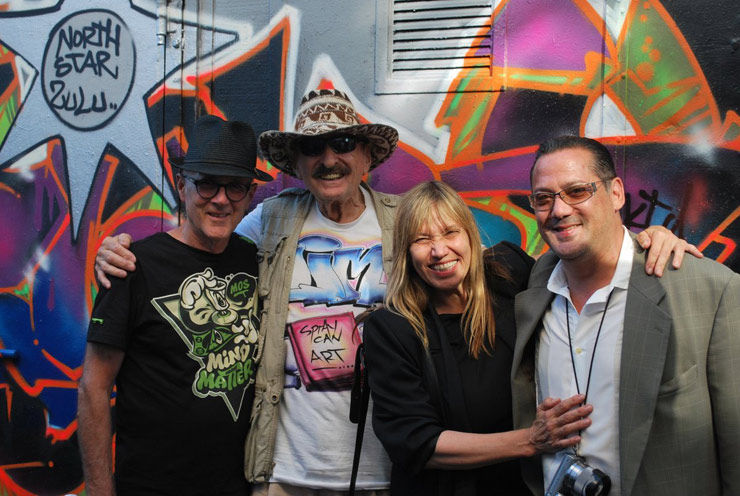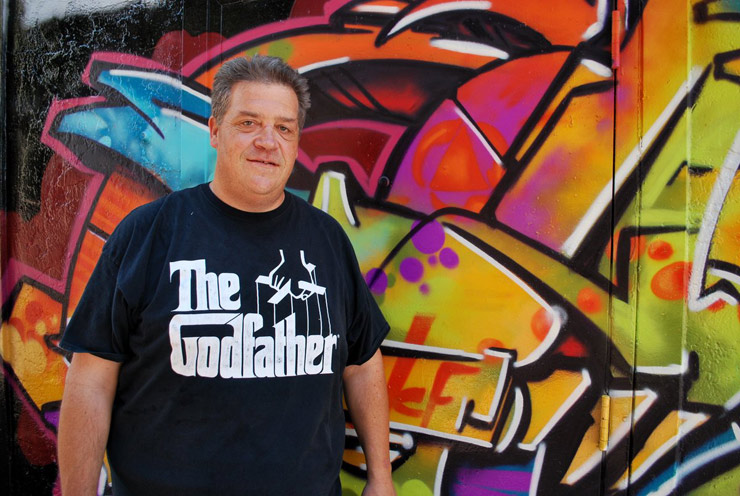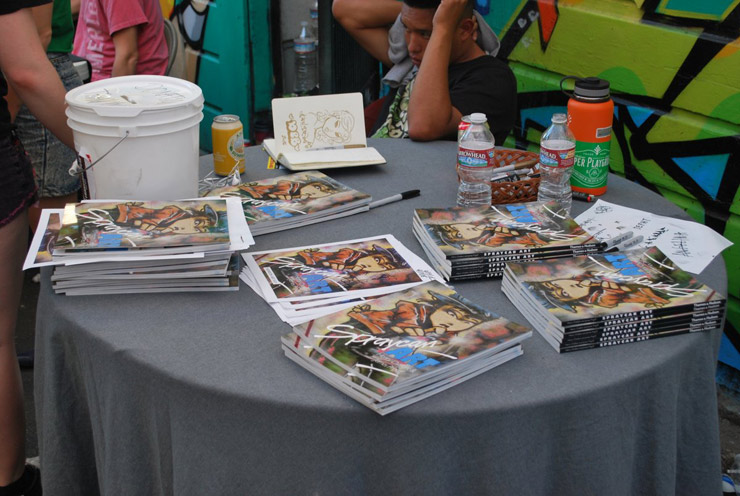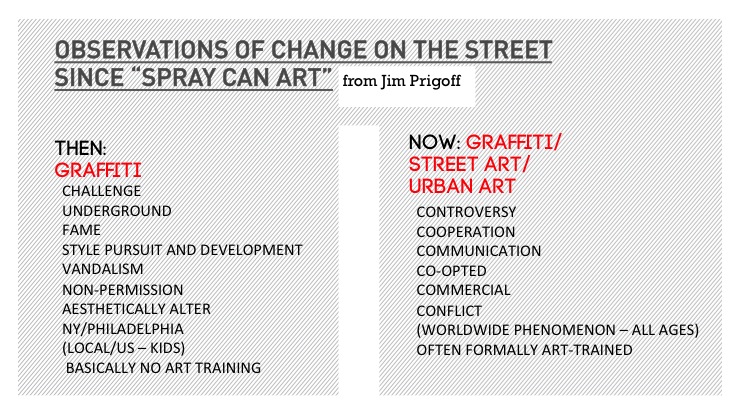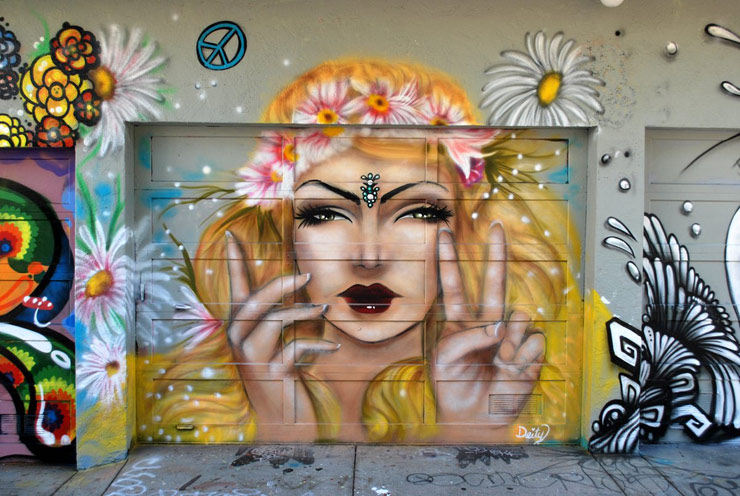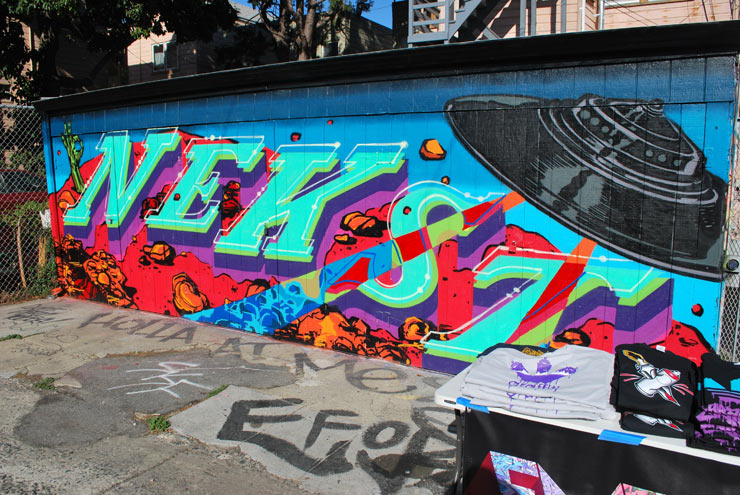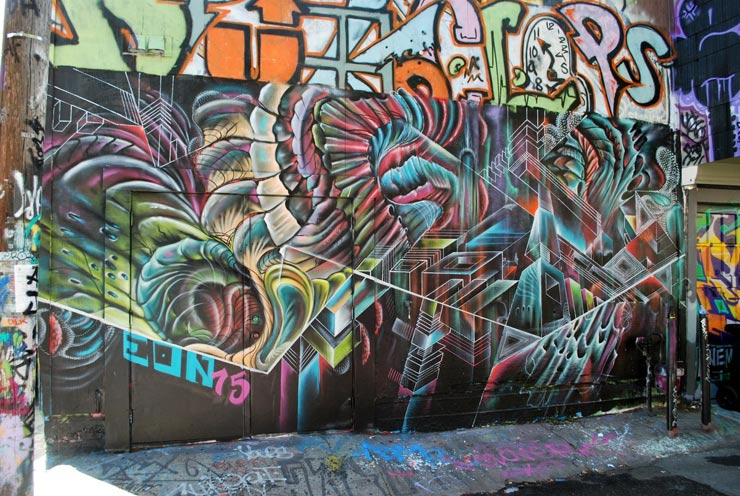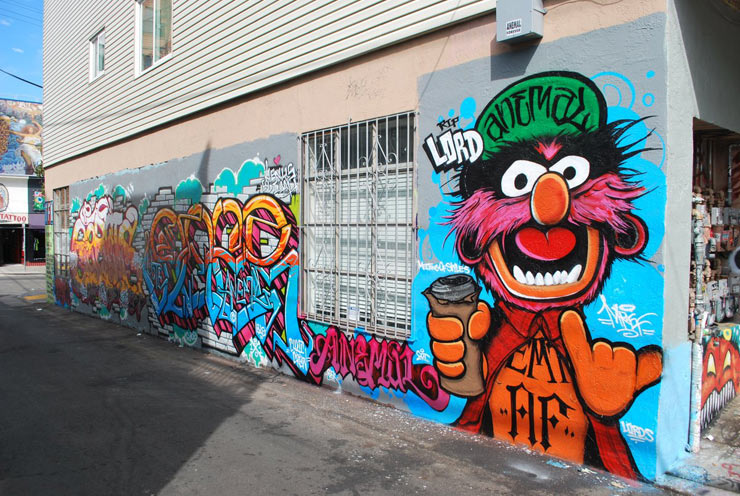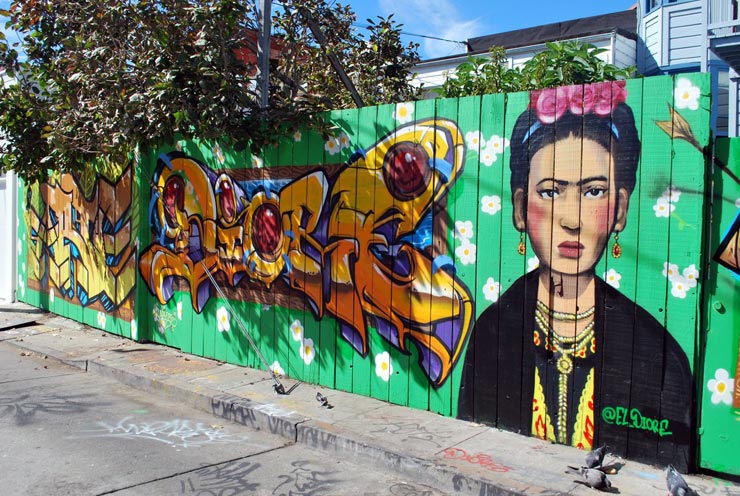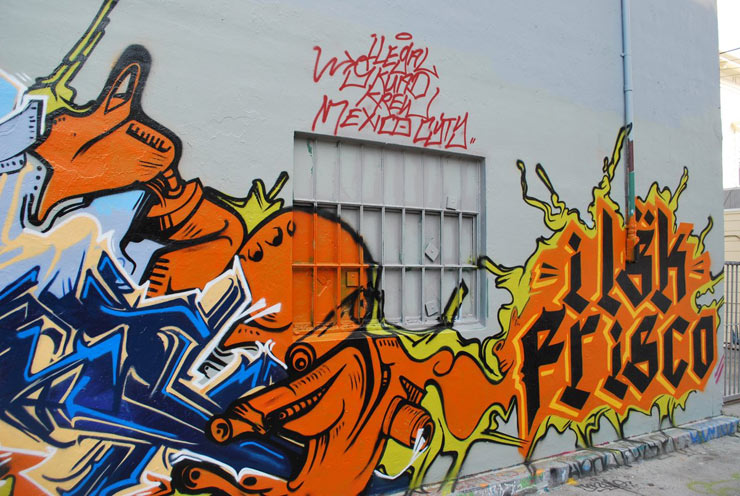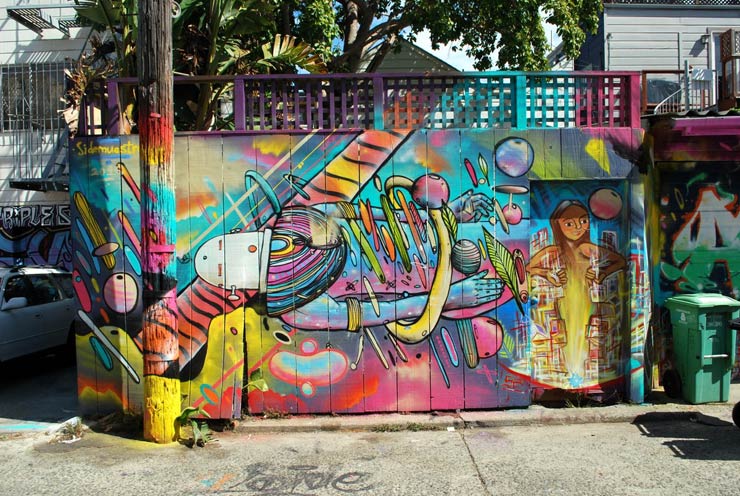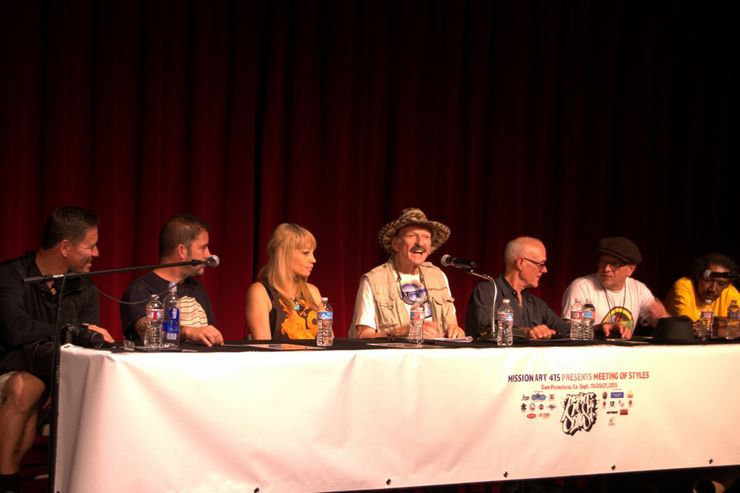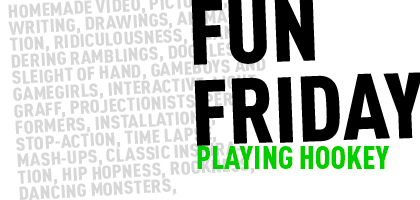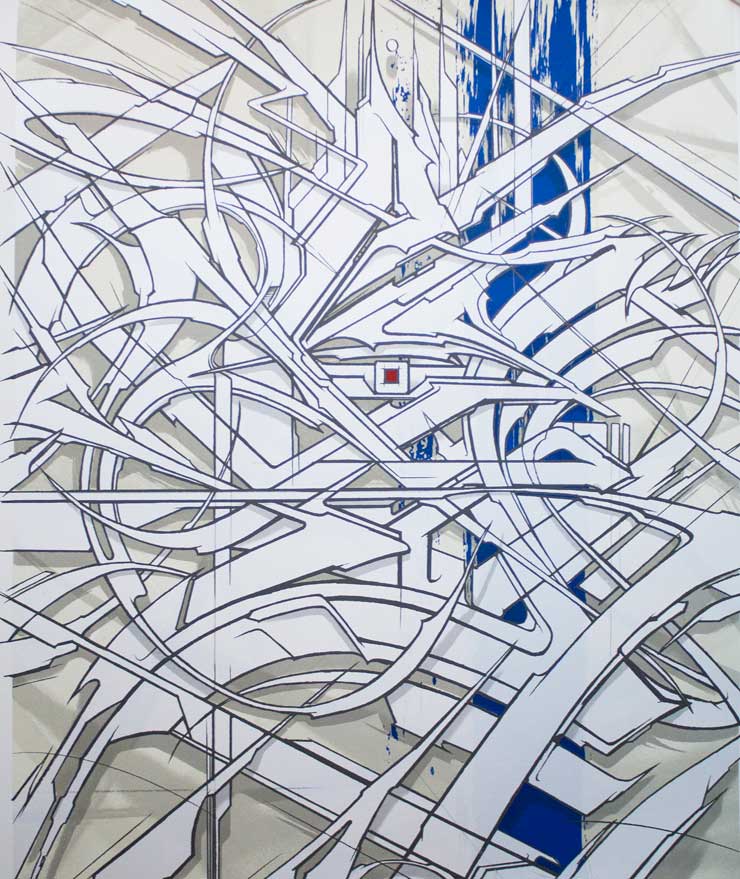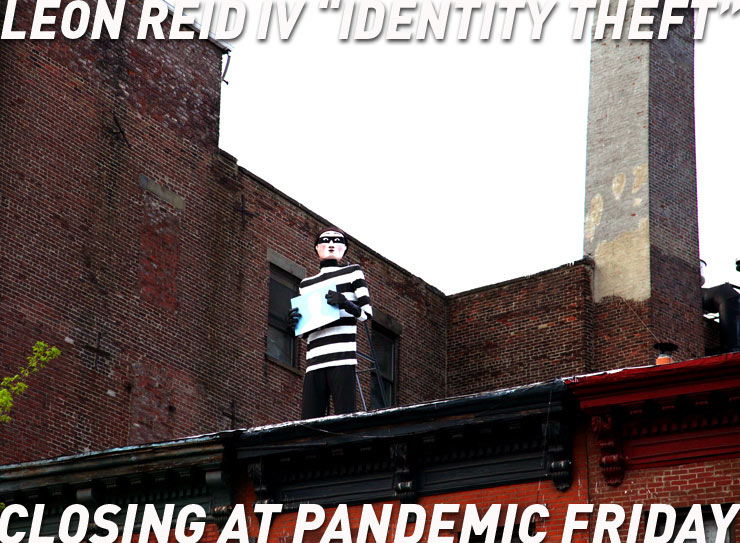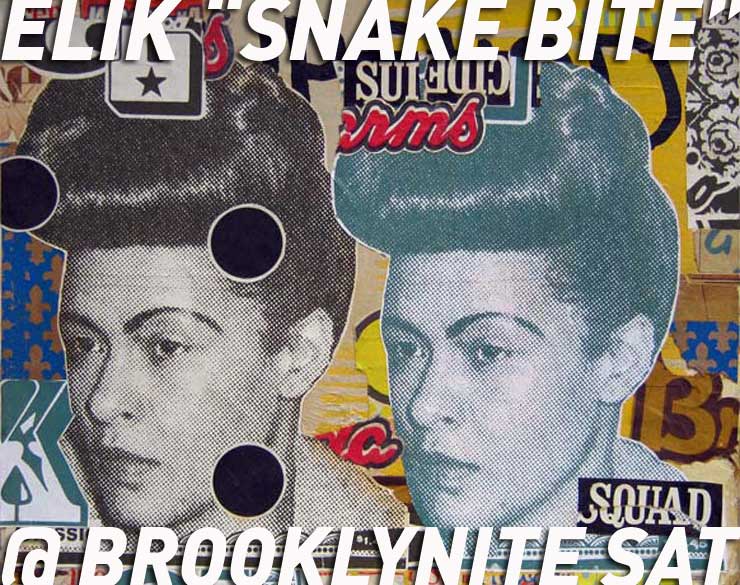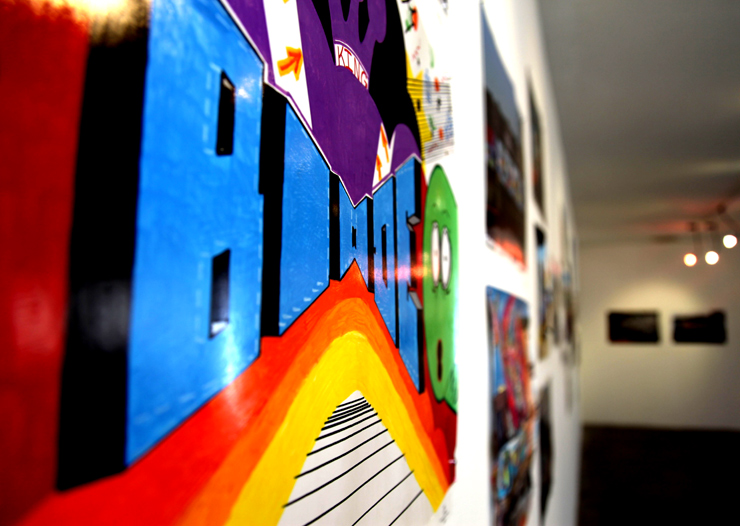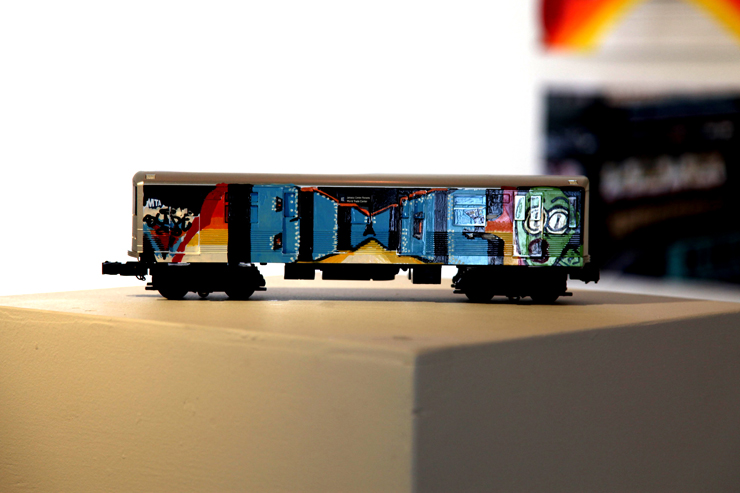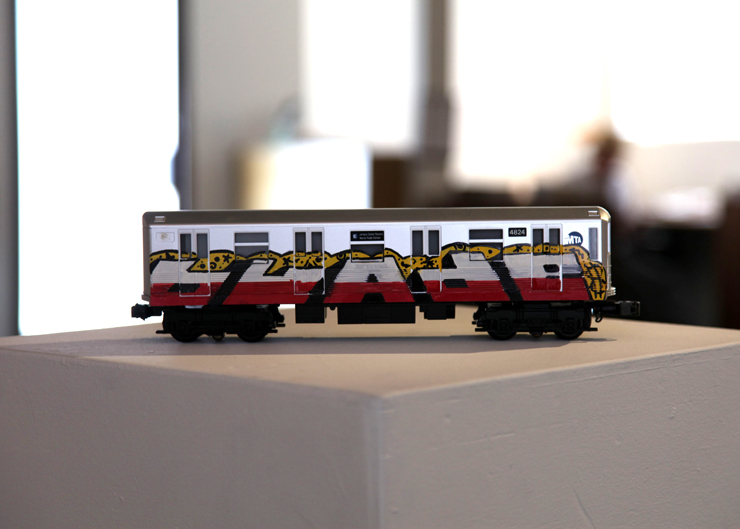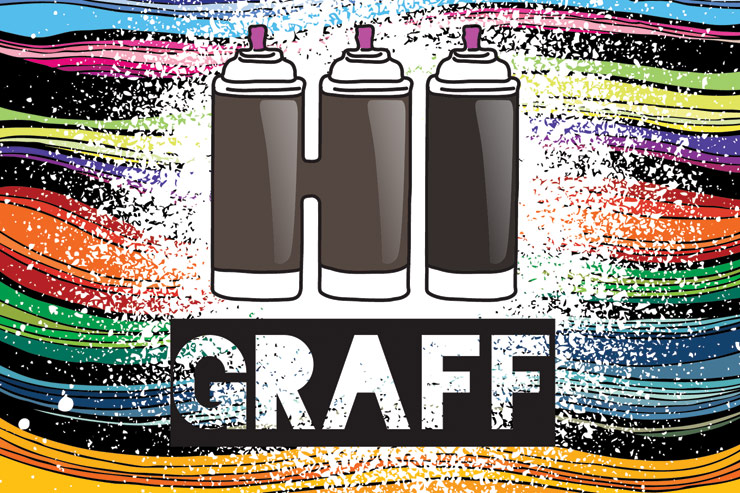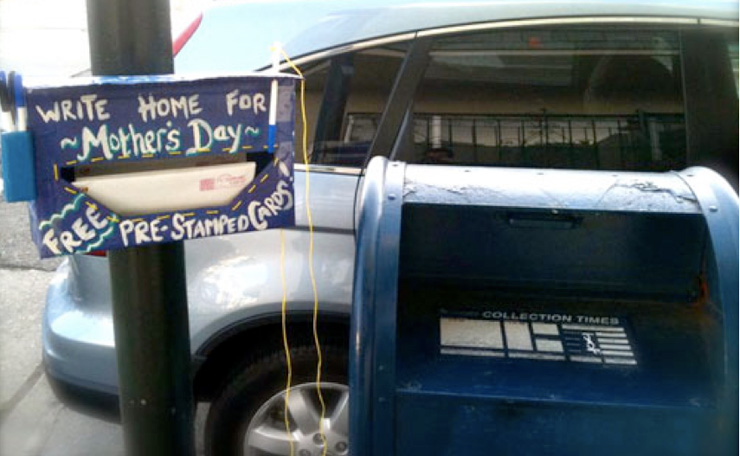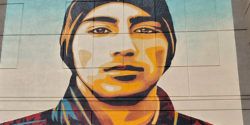MEETING OF STYLES had a huge event celebrating the 28th anniversary of the seminal book Spraycan Art by Henry Chalfant and James Prigoff in September in San Francisco. Organized by the community organization Mission Art 415, a weekend long celebration took place in the Mission District that drew thousands of visitors and many artists and graffiti writers, and the two authors of the book. Included in the events was a lot of live painting, panels, black book sharing, autographing, sticker swapping and general re-connecting as old friends got together to talk about and discuss graffiti culture.
Today we are proud to present one of the book’s authors, Jim Prigoff as he gives BSA readers some insight into the events from his perspective as well as his analysis of the scene then and now.
Henry Chalfant with Jim Prigoff with Lisa Brewer and Randolph Bowes, creators of Mission 415 (photo © Craig Potter)
……………………………
~ by Jim Prigoff
The MEETING OF STYLES is an international concept whose main organization is based in Germany and their events are supported in cities and countries throughout the world including the Spraycan Art event that was held in San Francisco on the weekend of September 18-20 this year.
Hundreds of writers came, many from international countries like Mexico, France, the UAE (Dubai), Columbia, Costa Rica, Germany, and Guam. They painted long alleys in the Mission District including on Lilac, Osage, Cypress, Lucky, Orange, Horace and in the El Capitan parking lot. The event tied into the 28th Anniversary of Spraycan Art because it was the first book to show the emerging art form as it left the NYC subway tunnels and walls and traveled around the world. With over 200,000 copies sold over the years many writers have told Henry and I how the book changed their lives, and in some cases people have said that it even saved their lives.
Dare from San Jose was at the launch of the book in 1987. He came back to support his friend being honored. (photo © Jim Prigoff)
Friday night there were awards and honors plus a panel discussion at the Mission Cultural Center as writers began to prep their walls and fill the air with the smell of spray paint. At the book signing, the graffiti writer Picasso came with a book he had signed in 1987 during the San Francisco introduction of the book. Carefully wrapped in a silk cloth, two new autographs were added.
The original spray cans used were developed for painting small areas with a broad spray and writers would rack caps from oven cleaners and other spraycan household products and adapt them to develop a different paint flow; even developing their own techniques to alter the paint flow. The paint was highly pressurized. At the time paint manufacturers recognized and were delighted with the expansion of their market, but for many years they pretended that this new demand did not exist.
Spraycan Art books ready to be signed by Jim and Henry. (photo © Jim Prigoff)
Today many new brand names have entered the field with lower pressurized paint flow and specially developed paint content and are marketing directly to the writers. Caps of all varieties are marketed and sold and business is big.
Deity (photo © Jim Prigoff)
After 40 years in the streets of the world, how could I not reflect on what is taking place today as contrasted with the days when literally thousands of scrawling tags confronted me as I traveled through the streets of NYC hunting painted murals and community art. What a journey! Who could have conceived that a relatively small band of basically untrained, creative youth could be the start of a worldwide art form that became the most important art developed in the last 40 years? Greatly aided by the Internet, where posts of new creations can now be seen instantly, literally millions of practitioners have gravitated to the medium in every corner of the world.
There was no going back. The traditional name letters and characters have morphed over the years into a much broader concept labeled Street Art and also today is known as Urban Art as multi-story buildings are commissioned to be painted using expensive lift apparatus, writers travel the world and their canvases sell for major dollars at art auctions in Paris and beyond. A look at BSA is clear evidence how the imagery created by the spraycan has basically changed to a whole new image focus.
Twick . ICP (photo © Jim Prigoff)
Like the small trickle of water that begins giant rivers like the Amazon, the Nile and the Ganges, this art form called Graffiti Art, Spraycan Art, Aerosol Art, Street Art or Urban Art, has emerged from its very humble beginnings to become a giant tide that I believe will continue to develop and change in the coming years.
Will there still be some traditional letters and characters created? Yes, but the vision and creativity of youth will be the driver of the future.
~Jim Prigoff
Steel (Nekst RIP) (photo © Jim Prigoff)
Eon75 (photo © Jim Prigoff)
LORDS . Anemal (photo © Jim Prigoff)
El Diore (photo © Jim Prigoff)
Illegal Squad (photo © Jim Prigoff)
ARM (photo © Jim Prigoff)
Crayone, Eon 75, Deb, Jim Prigoff, Henry Chalfant, Mark Bode, and Cuba during a special panel discussion. (photo © Craig Potter)
<<>>><><<>BSA<<>>><<<>><><bsa<<>>><><<>BSA<<>>><<<>><><bsa
Please note: All content including images and text are © BrooklynStreetArt.com, unless otherwise noted. We like sharing BSA content for non-commercial purposes as long as you credit the photographer(s) and BSA, include a link to the original article URL and do not remove the photographer’s name from the .jpg file. Otherwise, please refrain from re-posting. Thanks!
<<>>><><<>BSA<<>>><<<>><><bsa<<>>><><<>BSA<<>>><<<>><>BSA
 BROOKLYN STREET ART LOVES YOU MORE EVERY DAY
BROOKLYN STREET ART LOVES YOU MORE EVERY DAY